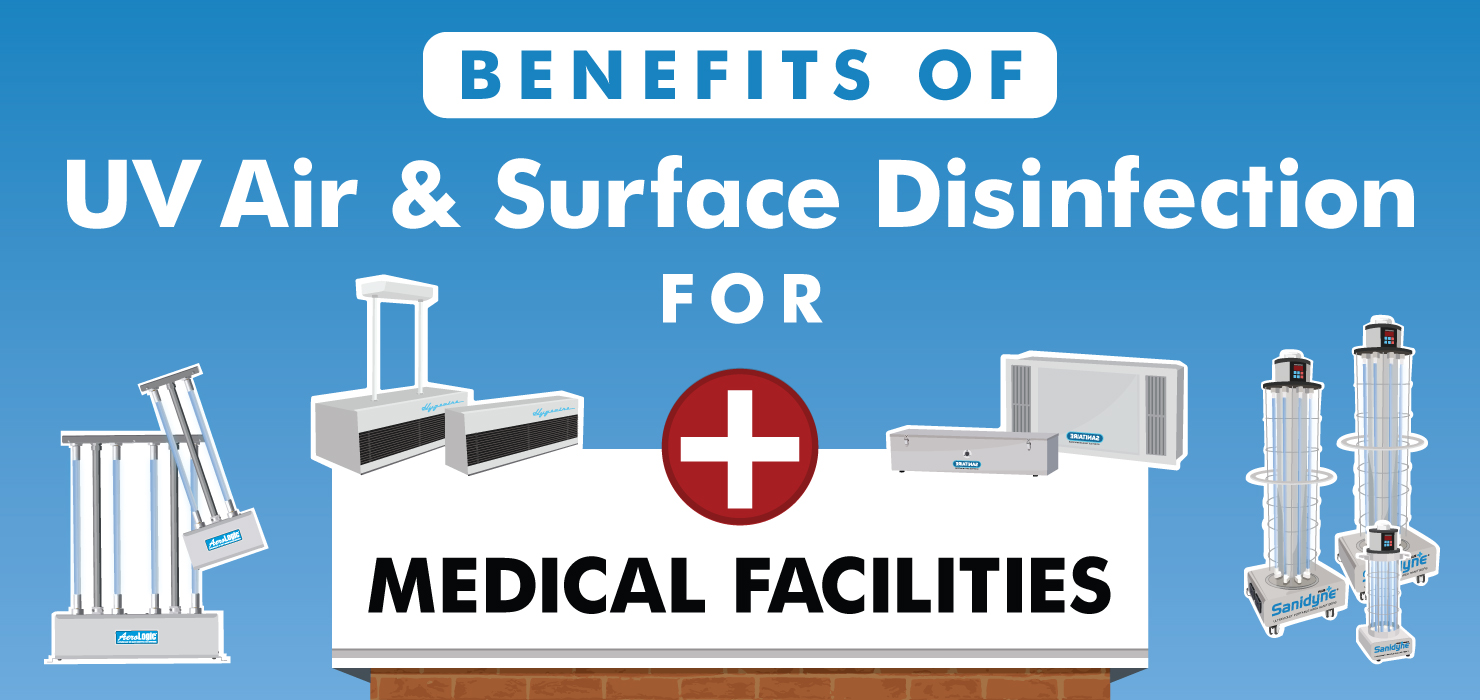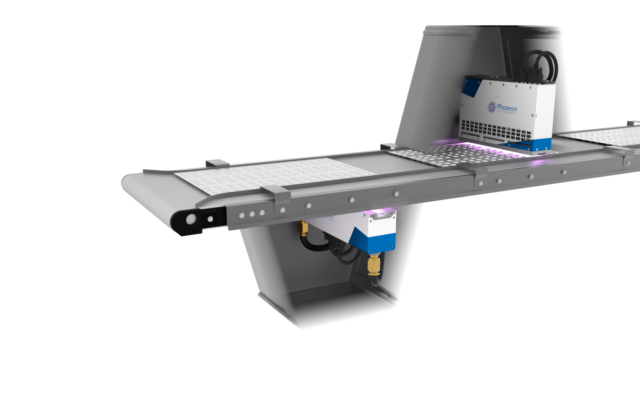Discover the Benefits of UV Surface Disinfection: Reliable and Eco-Friendly Sanitation
Wiki Article
Unveiling the Advantages of UV Sanitation: Guaranteeing Tidy and Sanitized Areas
In the age of enhanced awareness bordering health and cleanliness, the significance of reliable sanitation methods can not be overstated. While traditional cleansing approaches have actually long been depended upon, advancements in technology have presented a cutting-edge remedy that ensures clean and disinfected spaces: UV sanitation. By harnessing the power of ultraviolet light, this technique has acquired recognition for its capability to remove unsafe virus and provide an extensive sanitization procedure. The benefits of UV disinfection expand much beyond its efficacy. This discussion will certainly check out the scientific research behind UV sanitation, its performance on numerous virus, its applications in different settings, and the advantages it holds over typical techniques. In addition, we will certainly explore the safety factors to consider that have to be considered when executing UV disinfection. Prepare to uncover a new dimension of sanitation and uncover the untapped possibility of UV disinfection.
The Science Behind UV Sanitation
UV sanitation is a medically proven method that uses ultraviolet light to get rid of harmful microorganisms from surfaces and water. The science behind UV sanitation exists in the capability of UV-C light to damage the DNA and RNA of bacteria, rendering them incapable to reproduce and triggering their eventual death. UV-C light drops within the wavelength series of 200 to 280 nanometers, which is very efficient in destroying microorganisms, viruses, and various other pathogens.When revealed to UV-C light, the hereditary material of bacteria absorbs the energy from the light, leading to the development of thymine dimers. These dimers interrupt the typical replication and transcription procedures of the microorganisms, preventing their capacity to endure and duplicate (uv surface disinfection). The DNA and RNA damage brought on by UV-C light is lethal to the microorganisms, making UV sanitation a efficient and reputable technique for killing a variety of virus
UV disinfection is specifically advantageous in settings where conventional chemical disinfectants might be unwise or inefficient. It is a non-chemical method that does not leave any type of residues or dangerous byproducts, making it risk-free for use in food processing, health care centers, water treatment plants, and various other markets. Additionally, UV disinfection is eco-friendly, as it does not contribute to the growth of antibiotic-resistant microorganisms or other harmful toxins.
Performance of UV Sanitation on Pathogens
The efficiency of UV sanitation in getting rid of virus has actually been thoroughly studied and verified in many scientific research studies. UV radiation has the capability to suspend a variety of microbes, including viruses, fungis, and bacteria, by damaging their DNA or RNA. This stops them from replicating and creating infections.One research study released in the American Journal of Infection Control discovered that UV disinfection was effective in reducing the visibility of numerous drug-resistant germs in hospital rooms. One more study carried out by the National Institute for Occupational Safety and security and Wellness showed that UV sanitation had the ability to get rid of 99.9% of the influenza infection on surfaces.
UV sanitation has actually likewise revealed assurance in combating the spread of healthcare-associated infections (HAIs) According to a study released in The Lancet, making use of UV-C light along with typical cleaning methods substantially reduced the incidence of HAIs in a health center setup.
Moreover, UV disinfection has confirmed to be reliable versus arising virus, such as the extreme intense breathing syndrome coronavirus 2 (SARS-CoV-2), which causes COVID-19. A research study conducted by the National Arising Contagious Conditions Laboratories demonstrated that UV-C light can inactivate the virus on surfaces within secs.
Applications of UV Sanitation in Different Settings
With its tested performance in eliminating microorganisms, UV disinfection has located applications in a range of setups. UV sanitation is likewise useful in water treatment plants, where it is made use of to eliminate harmful microorganisms and offer secure drinking water.An additional essential application of UV sanitation impends purification market. UV air purifiers are utilized in property, industrial, and commercial settings to remove air-borne microorganisms, infections, and mold and mildew spores. This innovation is specifically valuable in settings where individuals are extra prone to respiratory system infections, such as health centers, institutions, and office complex.
In addition, UV sanitation is progressively being utilized in public transportation systems, such as buses and trains, to keep clean and sterilized spaces for guests. UV light is utilized to sanitize surfaces and air inside the vehicles, minimizing the risk of spreading infectious diseases.
Advantages of UV Sanitation Over Typical Approaches
contentIn contrast to traditional methods, UV sanitation provides an array of distinctive advantages that make it a better choice in different markets and settings. One considerable advantage is its effectiveness against a large variety of bacteria, consisting of viruses, microorganisms, and fungi. Unlike chemical disinfectants that may have limited efficacy versus certain microorganisms, UV disinfection is a non-selective procedure that can kill or suspend a wide range of dangerous microorganisms.
Another benefit of UV sanitation is its capacity to supply rapid and effective sanitation. Traditional sanitation techniques usually need longer get in touch with times or multiple actions to accomplish the preferred degree of disinfection. In contrast, UV light can offer immediate and continuous sanitation, decreasing downtime and enhancing productivity in different applications.
UV disinfection also supplies a ecologically friendly and secure option to conventional disinfection approaches. uv surface disinfection. Unlike chemical agents, UV light does not leave behind any kind of damaging residues or byproducts, making it suitable for usage in sensitive settings such as food processing centers, health care setups, and water therapy plants
In addition, UV disinfection is an economical service in the lengthy run. While the upfront financial investment for UV disinfection systems may be higher than typical methods, the functional find more info costs are commonly lower. UV lights have a long lifespan and need very little upkeep, resulting in decreased labor and substitute prices.
Safety Factors To Consider for UV Sanitation
Thinking about the possible dangers related to UV sanitation, it is vital to resolve the safety factors to consider associated with executing this modern technology. UV disinfection uses ultraviolet light to eliminate or suspend microorganisms, making it an efficient approach for sanitizing various surfaces and items. Nonetheless, it is necessary to understand that UV radiation can likewise posture risks to human health if appropriate precaution are not adhered to.Primarily, straight exposure to UV radiation can create injury to the skin and eyes. Long term direct exposure can lead to sunburn, skin damage, and even a boosted danger of creating skin cancer cells. It is crucial to ensure that UV sanitation systems are effectively confined and geared up with security features such as automated shut-off devices or movement sensors to prevent unintended exposure.

In addition, proper training and education and learning are necessary for those in charge of running UV disinfection systems. They need to understand the prospective hazards, comprehend the safety procedures, and recognize how to take care of and maintain the devices correctly.
Final Thought
UV disinfection can be applied in various settings, including healthcare facilities, food processing plants, and water treatment systems. Compared to standard approaches, Go Here UV sanitation has benefits such as faster sanitation times, very little chemical usage, and no dangerous results.UV sanitation is a clinically tried and tested technique that uses ultraviolet light to get rid of dangerous bacteria from surfaces and water. The DNA and RNA damage created by UV-C light is dangerous to the microbes, making UV sanitation a efficient and reputable method for killing a broad variety of pathogens.
Another benefit of UV disinfection is its ability to give reliable and rapid sanitation. UV sanitation uses ultraviolet light to kill or inactivate microbes, making it an efficient technique for disinfecting various surface areas and items. Contrasted to typical approaches, UV disinfection has benefits such as faster disinfection times, very little chemical use, and no harmful by-products.
Report this wiki page